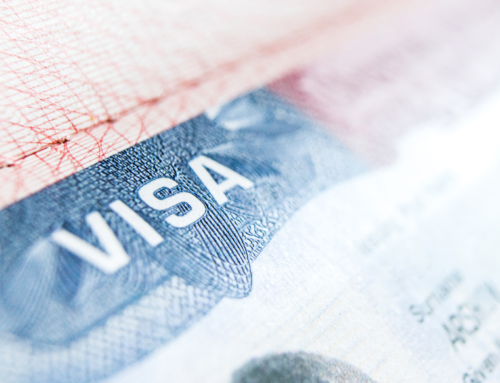Hair coloring is more than just a beauty trend; it’s a powerful tool for self-expression. Whether you’re looking to cover grey hairs, add some dimension, or completely change your look, hair coloring offers a world of possibilities. At the heart of it, hair coloring is all about enhancing your natural beauty while adding a touch of personality to your appearance. In this blog, we’ll explore everything you need to know about hair coloring, from the basics to expert tips, to help you make informed decisions about your next hair transformation.
What is Hair Coloring?
Hair coloring is the process of applying a pigmented formula to your hair, altering its natural colour. It can be done at home or in a professional salon, depending on the desired outcome and the complexity of the style. There are several different types of hair colouring techniques that can be used, such as permanent, semi-permanent, and temporary dyes. Each type offers distinct benefits, so it’s important to choose one that suits your hair care goals and maintenance routine.
The Different Types of Hair Coloring
-
Permanent Hair Color
Permanent hair colour is the most popular option for those looking for a long-lasting change. This type of colour penetrates the hair shaft, resulting in a more durable finish that doesn’t fade over time. It’s perfect for those who want a dramatic change and don’t mind regular touch-ups. -
Semi-Permanent Hair Color
If you want to experiment with hair colour without committing for too long, semi-permanent hair colour is the perfect option. It lasts between 4 to 6 weeks and fades gradually over time. It’s a great way to try out bold shades like blue or purple without the long-term commitment. -
Temporary Hair Color
Temporary hair color is exactly as it sounds—ideal for a short-term transformation. Whether you’re heading to a party or just want to try something fun for the weekend, temporary dyes only last until your next wash. They’re easy to apply and safe for those who aren’t ready for a permanent change. -
Highlights and Lowlights
Highlights are streaks of lighter color added to your hair, whereas lowlights are strands of darker hues. These techniques can add depth and dimension to your hair, creating a more natural look. They’re ideal for people who want to enhance their existing hair color without changing it entirely.
Benefits of Hair Coloring
-
Increased Confidence
There’s something about a fresh hair colour that can boost your confidence. Whether you opt for a subtle change or go bold with bright hues, a new hair color can make you feel more polished and self-assured. -
Versatility
Hair coloring opens up a world of possibilities when it comes to styling. From vibrant reds to pastel pinks, the colour palette is endless. It allows you to change your look as frequently as you like, ensuring your hairstyle stays exciting and fresh. -
Covering Grey Hair
One of the main reasons people turn to hair coloring is to cover grey hairs. With permanent hair color, you can easily achieve a youthful, vibrant look, restoring the colour to your natural shade or experimenting with new ones. -
Enhancing Your Natural Hair
Hair coloring can enhance your natural beauty. Highlights and lowlights, for example, add depth and dimension, giving your hair a fuller, more voluminous appearance. It can also bring out the best in your skin tone by complementing the hues of your complexion.
Choosing the Right Hair Color for You
Picking the right hair color can be a daunting task, especially with so many options available. Here are a few tips to help you choose a shade that works best for you:
-
Consider Your Skin Tone
Your skin tone plays a huge role in determining the best hair color for you. Warm-toned individuals tend to look great with shades like golden blonde, rich brown, or copper, while cool-toned individuals shine with shades like ash blonde, platinum, or blue-based reds. Choose a shade that complements your undertones for the most flattering result. -
Start with Subtle Changes
If you’re new to hair coloring, it’s best to start with subtle changes before diving into a dramatic transformation. Highlights or a semi-permanent dye are great options to ease into the world of hair coloring without committing to a drastic change right away. -
Consult a Professional
When in doubt, always seek the advice of a professional hair colourist. They can help guide you in choosing the right shade and ensure the colour complements your hair type and texture. Whether you’re going for a natural look or something more bold, a professional’s expertise is invaluable.
Hair Coloring Techniques to Try
-
Balayage
Balayage is a popular freehand colouring technique that creates a natural, sun-kissed look. The colour is painted onto the hair in a way that mimics how the sun would naturally lighten your strands. It’s low maintenance and gives a soft, blended effect. -
Ombré
Ombré is a gradient hair colour technique that starts darker at the roots and gradually lightens toward the ends. It’s a stunning look that requires minimal upkeep, as the roots will naturally grow out without showing harsh lines of regrowth. -
Colour Melt
Colour melt is similar to ombré but with a more seamless transition between the different shades. The colours blend together beautifully, creating a soft, flowing effect that works well with a variety of hair lengths and textures. -
Root Smudge
Root smudging is a technique where the colour at the roots is softened, creating a more natural look as the hair grows out. It’s ideal for those who don’t want to deal with harsh lines of regrowth, and it works well for both blonde and brunette shades.
How to Care for Coloured Hair
Once you’ve had your hair coloured, it’s important to maintain its vibrancy and health. Here are a few tips to keep your hair looking its best:
-
Use Colour-Safe Shampoo and Conditioner
Choose hair care products specifically designed for coloured hair. These products help preserve the colour and keep your hair moisturised and healthy. -
Avoid Excessive Heat Styling
Heat can cause coloured hair to fade more quickly. Try to limit the use of hot styling tools like straighteners and curling irons. If you do use them, always apply a heat protectant spray beforehand. -
Deep Condition Regularly
Colouring your hair can strip it of moisture, so it’s important to deep condition your hair regularly. Use a nourishing hair mask once a week to keep your hair hydrated and soft. -
Protect from the Sun
Just like your skin, your hair can suffer from UV damage. If you’re spending time in the sun, wear a hat or use a UV protectant spray to shield your hair from harmful rays.
Is Hair Coloring Right for You?
Hair coloring is a fantastic way to reinvent yourself and explore new looks. Whether you’re looking to cover grey hair, try a completely new shade, or add depth to your natural colour, hair colouring can offer the transformation you’re seeking. By considering factors like your skin tone, maintenance level, and hair health, you can make an informed decision about which hair color is right for you.
When in doubt, always consult a professional to ensure the best outcome for your hair. After all, your hair is one of the most important elements of your overall style, so make it count!







